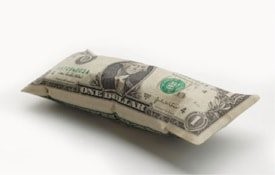Inflation Threat Looms in 2020 as Fiscal and Monetary Stimulus Ramp Up
The Federal Reserve left its benchmark interest rate unchanged as expected last week. However, Fed Chairman Jerome Powell made news with some of his most dovish remarks to date – stating flatly that he won’t hike rates again until inflation moves up significantly.
“In order to move rates up, I would want to see inflation that’s persistent and that’s significant,” Powell said at a news conference following the Fed’s announcement.
He would be anticipating “a significant move up in inflation that’s also persistent before raising rates to address inflation concerns.”
He could get his wish in the months ahead as monetary policy, fiscal policy, and the economy all seem to be lining up to push the inflation rate higher. In 2020, inflation may become a front-page problem for the first time in many years.
The government’s release of a blockbuster jobs report this month diminishes the odds of the economy falling into a recession next year. At the same time, it increases the likelihood of inflation rates rising.
It’s not that the economy is at risk of “overheating.” Overall GDP growth is likely to come in moderate at best next year.
Rather, the economy is merely showing signs of sustaining its expansion at a time when fiscal and monetary policy are extremely stimulative.
The U.S. government is now running trillion-dollar budget deficits for the first time since the aftermath of the 2008 financial crisis. It will effectively pump $1 trillion worth of artificial demand back into the economy in 2020.
Needless to say, there is no will or way in Washington to cut spending or raise taxes in an election year.
At the same time, the Fed is holding its benchmark short-term interest rate at 1.50%-1.75%, which is a negative real rate.
Explains Barron’s columnist Randall W. Forsyth, “The fed-funds rate is actually below zero in real terms, that is, after factoring in inflation. Negative real rates usually are imposed to spur spending and investment to stimulate an economy in recession, which is far from the present state.”
Inflation as measured by the Consumer Price Index is running at 2.1% annually according to the latest data reported by the Bureau of Labor Statistics on Wednesday. Consumer prices have climbed more than expected this fall on rising energy costs.
But it’s still not enough inflation for the Fed’s liking!
The central bank’s preferred inflation gauge is the core Personal Consumption Expenditures index, which is running only at an estimated 1.5% year-on-year. Jerome Powell and company want to push it to 2%...and above, on a “persistent” basis, before tightening monetary policy.
Let’s not forget (like some in the financial media apparently have) that the Fed is also pursuing a massive balance sheet expansion. Even though policymakers refuse to call it QE, the monthly liquidity injections and T-bill purchases are of similar magnitude as previous rounds of Quantitative Easing.
In fact, since “not QE” was announced in September (and subsequently expanded), the Fed’s balance sheet has been growing at a 28% rate. The money supply itself is expanding at an 11% clip.
All this stimulus will have consequences, and they won’t just show up in the form of higher stock prices. Although the stock market seems poised to continue advancing, higher commodity and consumer prices could begin to spread through the economy as well.
Though long depressed, crude oil prices have started to trend higher in recent months.

Copper and precious metals prices are also showing some strength and could be on the verge of major breakouts heading into year end.
When Americans think of nasty inflation, they tend to recall the late 1970s stagflation. It coincided with spikes in gold and silver markets.
The inflation monster wasn’t finally tamed until Fed chairman Paul Volcker stepped in and jacked up interest rates to double-digit levels, triggering a recession. Volcker’s decision wasn’t popular on Wall Street or in Washington, but it did restore confidence in the dollar and set the stage for the expansions of the 80s and 90s.
The current crop of central bankers is too cowardly, too beholden to bankers and politicians, to do what Volcker did. He passed away this month and will be remembered as an inflation hawk.
But today, the doves are in charge at the Fed – and they bound and determined to create a new inflation cycle.
********






 Stefan Gleason
Stefan Gleason









